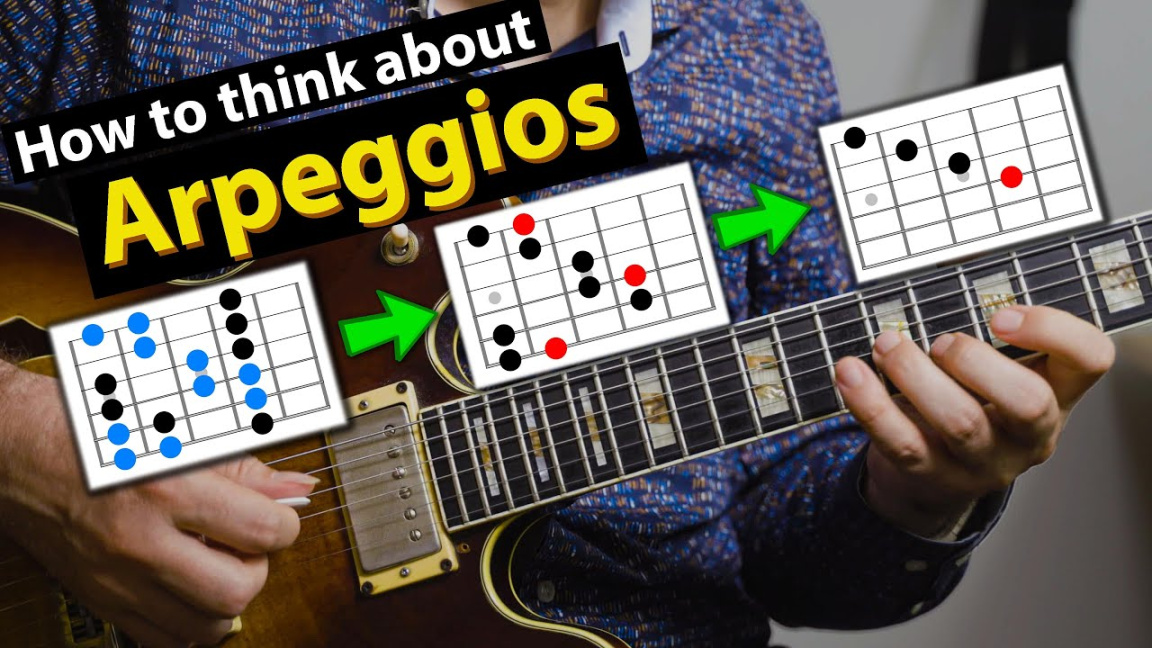—
Guitar Arpeggios: Unlocking Your Fretboard and Sound
So, you’re a guitarist. You’ve got your Chords down, you can strum a tune, and maybe you’ve even dabbled in some basic lead playing. But you’re looking for that next level, something to really spice up your playing and give it that professional edge. Enter the arpeggio.
What exactly is an arpeggio? Simply put, it’s playing the notes of a chord individually, rather than strumming them all at once. Think of a C major chord: C-E-G. Now, play those notes one after the other, and you’ve got a C major arpeggio. It’s that simple, but the impact it can have on your playing is huge.
Why Arpeggios Matter

Arpeggios aren’t just a fancy way to play chords. They’re a fundamental tool for any guitarist looking to improve their lead playing, songwriting, and overall understanding of the fretboard. Here’s why they’re so important:
Connecting Chords and Lead Lines
Ever wonder how guitarists seamlessly transition from rhythm to lead? Arpeggios are a big part of that. By knowing the arpeggios of the chords in a progression, you can create lead lines that perfectly complement the underlying harmony. This makes your solos sound more melodic and intentional, rather than just random notes thrown together.
Expanding Your Fretboard Knowledge
Learning arpeggios forces you to explore different areas of the fretboard. You’ll start to see patterns and relationships between notes that you might have missed before. This deeper understanding of the fretboard will make you a more versatile and confident player.
Adding Depth and Complexity to Your Playing
Arpeggios can add a whole new dimension to your playing. They can be used to create intricate melodies, add texture to your rhythm playing, and even create unique soundscapes. They’re a great way to break out of the same old patterns and explore new sonic territories.
Improving Your Technique
Practicing arpeggios can significantly improve your picking and fretting hand technique. You’ll develop better accuracy, speed, and control, which will benefit all aspects of your playing.
Getting Started with Arpeggios
Okay, so you’re convinced. But where do you start? Don’t worry, it’s not as daunting as it might seem. Here’s a simple approach:
Start with the Major and Minor Triads
The foundation of most arpeggios lies in the major and minor triads. These are the basic building blocks of chords, and understanding them is crucial. Start by learning the shapes of these triads in different positions on the fretboard.
Learn the CAGED System
The CAGED system is a great way to visualize and learn arpeggio patterns. It breaks down the fretboard into five basic chord shapes (C, A, G, E, D) and shows how these shapes can be used to play arpeggios in different keys.
Practice Slowly and Methodically
Don’t try to learn everything at once. Start with one arpeggio shape and practice it slowly and methodically. Focus on accuracy and clean articulation. Use a metronome to keep your timing consistent.
Experiment with Different Rhythms and Patterns
Once you’re comfortable with the basic arpeggio shapes, start experimenting with different rhythms and patterns. Try playing the notes in different orders, skipping notes, and using different picking techniques.
Apply Them to Your Playing
The real magic happens when you start applying arpeggios to your playing. Try incorporating them into your solos, rhythm playing, and songwriting. Listen to your favorite guitarists and see how they use arpeggios in their music.
Common Arpeggio Patterns
Here are a few common arpeggio patterns that you can start practicing:
Major Triad Arpeggio (Root, Major Third, Perfect Fifth)
This is the most basic arpeggio, and it’s essential for understanding major chords. For example, a C major arpeggio is C-E-G.
Minor Triad Arpeggio (Root, Minor Third, Perfect Fifth)
Similar to the major triad, but with a minor third. For example, a C minor arpeggio is C-Eb-G.
Major 7th Arpeggio (Root, Major Third, Perfect Fifth, Major Seventh)
This arpeggio adds a major seventh to the major triad, creating a richer, more sophisticated sound. For example, a C major 7th arpeggio is C-E-G-B.
Minor 7th Arpeggio (Root, Minor Third, Perfect Fifth, Minor Seventh)
This arpeggio adds a minor seventh to the minor triad, creating a bluesy, soulful sound. For example, a C minor 7th arpeggio is C-Eb-G-Bb.
Dominant 7th Arpeggio (Root, Major Third, Perfect Fifth, Minor Seventh)
This arpeggio is commonly used in blues and jazz. For example, a C dominant 7th arpeggio is C-E-G-Bb.
Tips for Mastering Arpeggios
Mastering arpeggios takes time and dedication, but here are a few tips to help you along the way:
Practice Regularly
Consistency is key. Even short practice sessions every day are more effective than long, infrequent ones.
Use a Metronome
A metronome will help you develop your timing and rhythm.
Record Yourself
Recording yourself playing can help you identify areas where you need to improve.
Learn Songs That Use Arpeggios
Learning songs that feature arpeggios can be a fun and engaging way to practice.
Don’t Be Afraid to Experiment
There are no rules when it comes to arpeggios. Experiment with different shapes, patterns, and rhythms to find your own unique voice.
Conclusion
Arpeggios are a powerful tool that can take your guitar playing to the next level. They open up new possibilities for lead playing, songwriting, and overall musical expression. While they might seem intimidating at first, with consistent practice and a methodical approach, anyone can master them. Start with the basics, learn the common patterns, and most importantly, have fun exploring the endless possibilities that arpeggios offer. By incorporating them into your playing, you’ll not only enhance your technical skills but also gain a deeper understanding of music theory and the fretboard. So, pick up your guitar, start practicing, and unlock the hidden potential of your playing.

